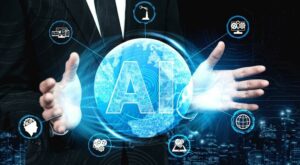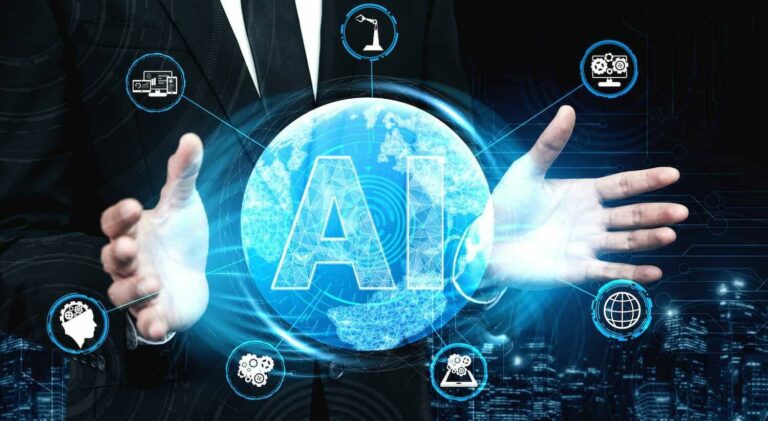Utilizing an agile and flexible approach, we help examine your goals with a focus on people, process, technology and culture. We are here to help organizations manage risks, enable growth and support sustainable operations. Often known as 3D printing, the term additive manufacturing is used because it includes any manufacturing process where products AI in Manufacturing and objects are built up, layer by layer. This differentiates it from more traditional, subtractive manufacturing processes where a product or component is made by cutting away at a block of material. Manufacturing companies can use blockchain to track goods in real time, reducing the risk of lost or stolen items and improving delivery times.
In order to attain better output levels with less resource consumption, machine learning algorithms can determine the best production parameters, such as speed, temperature, and material utilization. Decreasing centerline segregation of casting slabs in the continuous casting process is an important parameter for a better mechanical property. For early detection of the centerline segregation from operation input parameters measured in continuous cast steel slabs, Nieto et al. [70] showed a novel hybrid algorithm based on SVM combined with the particle swarm optimization (PSO). In addition, for comparative purposes, the experimental results include an MLP and a multivariate adaptive regression splines (MARS) approach in conjunction with the PSO.
Sensors Capture Data for Real-Time AI Analysis
It optimizes workflows, augments supply chains, and fosters collaborative environments where humans and AI-driven robotics harmonize for unparalleled productivity. One of the key benefits of AI in manufacturing for new product development is the ability to analyze vast amounts of data quickly and efficiently. By leveraging machine learning algorithms, manufacturers can gather insights from market trends, customer preferences, and competitor analysis.
- It can also be used to spot and correct errors made by 3D printing technology in real-time.
- As well as dealing with these long-term disruptions, manufacturers are increasingly tasked with more responsible, ethical, and sustainable sourcing of materials.
- Unfortunately, it still faces much reluctance when adopting it directly at manufacturing sites.
- These networks are specifically designed for solving tasks involving object detection, localization, and segmentation.
- This helps manufacturers avoid stockouts and overstock situations, leading to minimized inventory costs and better resource allocation.
The technology is also assisting enterprises with data-driven decision-making, and driving innovation and productivity across the entire manufacturing lifecycle. For instance, our client, a global manufacturer of heavy construction and mining equipment, faced challenges with a decentralized supply chain, resulting in increased transportation costs and manual data resolution. To address this, we developed a data-driven logistics and supply chain management system using AI-powered Robotic Process Automation (RPA) and analytics. The RPA bots automated manual processes, resolving errors and enhancing supply chain visibility by 60%, ultimately improving operational efficiency by 30%. For example, by leveraging the power of machine learning in manufacturing, semiconductor companies can identify component failures, predict potential issues in new designs, and propose optimal layouts to enhance yield in IC design.
Retrieval Augmented Generation (RAG) Tools / Software in ’23
For the manufacturing procedure, the production facilities, and the customer experience, they also use digital models. The digital twin of their manufacturing facilities can precisely identify energy losses and point out places where energy can be saved, and overall production line performance increased. Integrating AI into manufacturing operations can also provide significant advantages in predictive maintenance. By learning from historical data, AI can predict when a machine is likely to fail or need maintenance.

These algorithms can detect defects, anomalies, and deviations from quality standards with exceptional precision, surpassing human capabilities. Quality assurance is a critical aspect of manufacturing, and artificial intelligence has emerged as a game changer in this domain. By leveraging the power of AI and ML in manufacturing, companies are revolutionizing their approach to quality control, ensuring higher levels of accuracy and consistency. Moreover, AI applications in manufacturing can optimize energy consumption, minimize waste, and improve sustainability efforts.
Digital twins help boost performance
PdM systems can also help companies predict what replacement parts will be needed and when. Here are 10 examples of AI use cases in manufacturing that business leaders should explore now and consider in the future. The Google Cloud Customer Intelligence team conducted the Google Cloud Generative AI Benchmarking Study in mid-2023. Participants included IT decision makers, business decision makers, and CXOs from 1,000+ employee organizations considering or using AI. Participants did not know Google was the research sponsor and the identity of participants was not revealed to Google. In manufacturing, product and service manuals can be notoriously complex — making it hard for service technicians to find the key piece of information they need to fix a broken part.

Some manufacturing robots are equipped with machine vision that helps the robot achieve precise mobility in complex and random environments. Industrial robots, also referred to as manufacturing robots, automate repetitive tasks, prevent or reduce human error to a negligible rate, and shift human workers’ focus to more productive areas of the operation. Applications include assembly, welding, painting, product inspection, picking and placing, die casting, drilling, glass making, and grinding. Thanks to AI, what ‘happens outside the factory’ is no longer a passing thought for those responsible for the inside. In fact, manufacturers are looking for any external data points they can gather – about their vendors, supply chain, purchases, and inventory levels over time – that will let them estimate their inventory levels a month from now.
How AI is Proving as a Game Changer in Manufacturing – Use Cases and Examples
Collaborative robots — also called cobots — frequently work alongside human workers, functioning as an extra set of hands. He is a part of the Autodesk Industry Futures team and leads the R&D effort for this group. Harris has a background in aerospace, automotive, and materials science with 15 years of experience in this area. He has a master’s degree in aerospace engineering and a doctorate in materials science from the University of Surrey. At Autodesk, Harris works directly with industrial partners and universities to provide innovative solutions. For example, applying thermal treatment on an additive part can be done straight from the 3D printer.
Innovating with responsibility: How customers and partners are … – Microsoft
Innovating with responsibility: How customers and partners are ….
Posted: Mon, 23 Oct 2023 13:13:10 GMT [source]
The ACWF uses intelligent applications and workforce analytics to provide everyday context and guidance to support the workforce’s experience, well-being, and ability to develop its own skills. At the same time, the ACWF drives business results and positive impact for key stakeholders. Intelligent Applications
Intelligent applications include intelligence — which Gartner defines as learned adaptation to respond appropriately and autonomously — as a capability. This intelligence can be utilized in many use cases to better augment or automate work. As a foundational capability, intelligence in applications comprises various AI-based services, such as machine learning, vector stores and connected data.
Supply Chains Are Still in Shock from COVID-19
Li et al. [73] proposed precise bending force prediction, which can enhance the control precision and flatness of the strip crown and further boost the strip shape quality. The findings indicate that GPR, with the best prediction precision, better stability, and reasonable computational expense, is the optimal model for bending force prediction. In this section, many deep learning methods for monitoring the system and detecting faults are discussed.
About Gartner IT Symposium/Xpo
Gartner IT Symposium/Xpo is the world’s most important gathering for CIOs and other IT executives. IT executives rely on these conferences to learn how to unleash the possibility of the technology, insights and trends shaping the future of IT and business. Follow news, photos and video coming from Gartner IT Symposium/Xpo on the Gartner Newsroom, on X using #GartnerSYM, Instagram and LinkedIn. Gartner, Inc. today announced its list of 10 top strategic technology trends that organizations need to explore in 2024. Analysts presented their findings during Gartner IT Symposium/Xpo, which is taking place here through Thursday.
Beyond the status quo: How generative AI will transform industrial operations
In the context of manufacturing, this implies the creation of optimized design alternatives for parts, products, or even entire production processes. Manufacturing companies can use digital twin simulations to test and validate new production techniques and systems before they are implemented in the physical world, reducing the risk of costly mistakes. Recently, secondary battery has gained considerable interest worldwide due to its rising demand for electric vehicles (EVs) and hybrid electric vehicles (HEVs). The former is performed ex-situ by predicting in advance the battery behavior under specific conditions, while the latter is conducted in-situ by the battery management system (BMS) contained in a battery pack for EVs and HEVs. Pedestrian detection refers to the task of differentiating pedestrians on roads from other objects. Special attention is given to this task due to its importance for preventing vehicle-to-human accidents.

